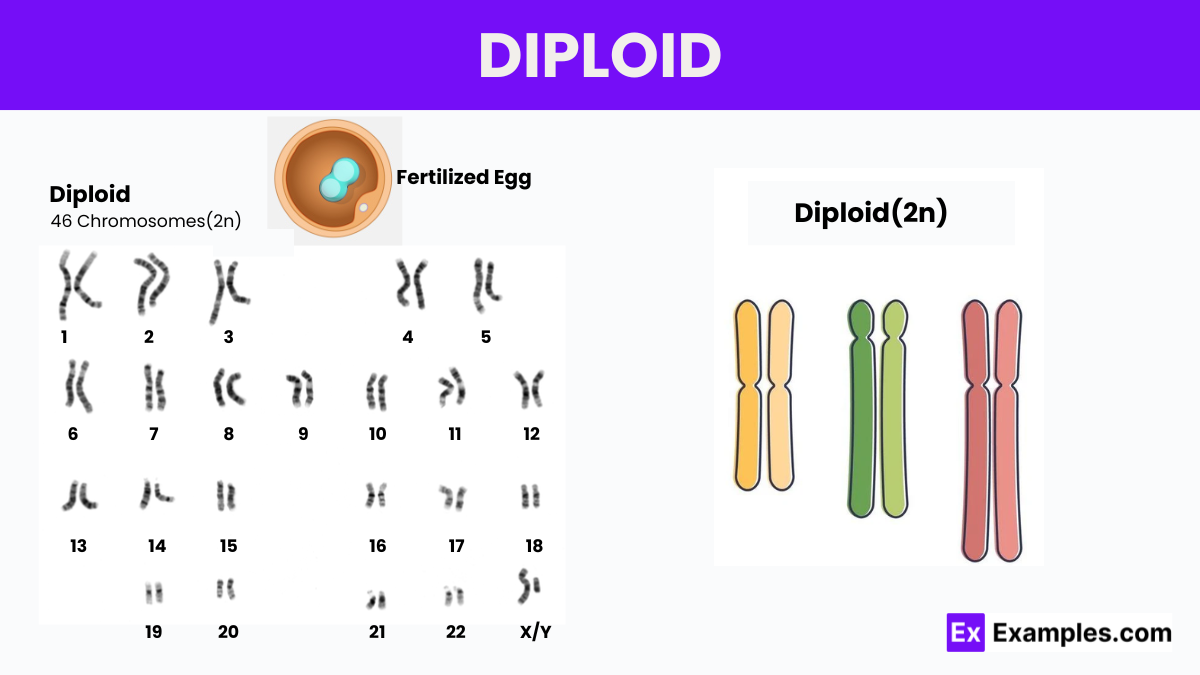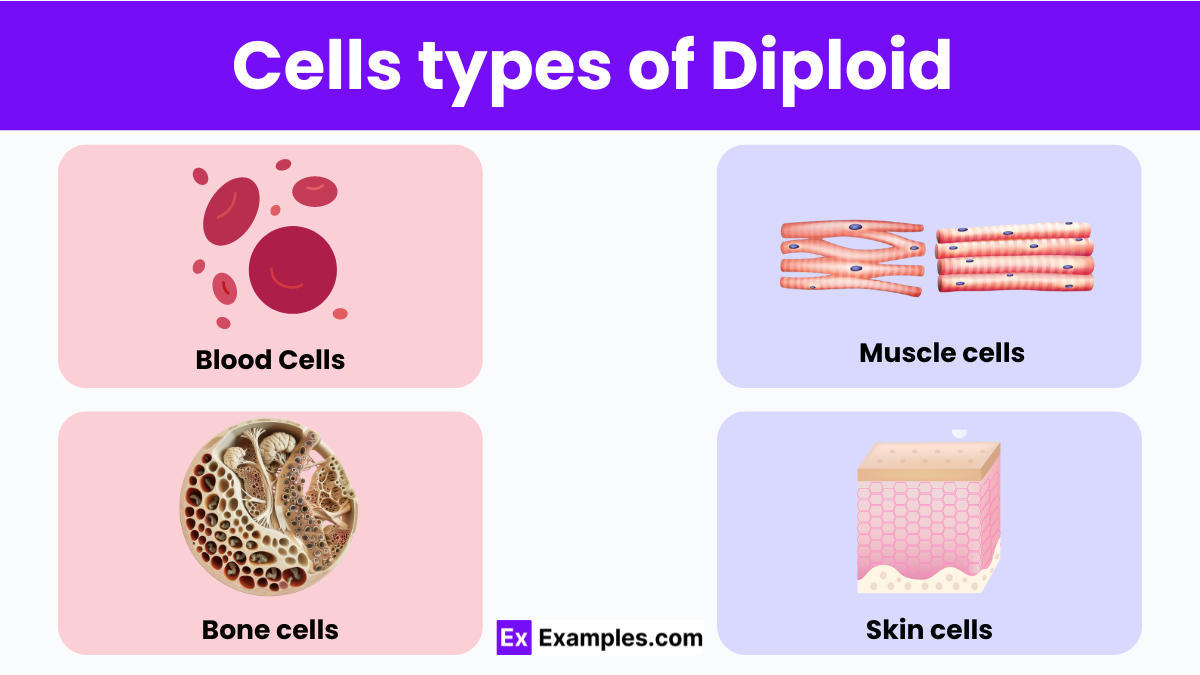What does "diploid" refer to in biology?
One set of chromosomes
Two sets of chromosomes
Three sets of chromosomes
No chromosomes


Diploid cells form the foundation of most human tissues, containing two complete sets of chromosomes, one from each parent, amounting to 46 in total. This configuration, noted as 2n, contrasts with haploid cells like sperm and egg, which have just one set of 23 chromosomes. Diploid is the typical state for all non-reproductive cells in humans, encompassing everything from skin to blood cells, ensuring genetic diversity and stability across cellular functions.
A diploid cell contains two sets of chromosomes, which is the standard number found in most body cells, playing a crucial role in growth, development, and tissue repair. Common examples of diploid cells are skin cells, blood cells, and muscle cells, each typically housing 46 chromosomes in humans.
Diploid cells possess two sets of chromosomes, doubling the number found in haploid cells, and are essential for asexual reproduction and bodily functions. Mitosis, the cell division process, maintains the chromosome count in these cells, including the aforementioned skin, blood, and muscle cells. Diploid cells ensure stability and continuity in genetic information, which is critical for maintaining the organism’s health and function. When cells divide through mitosis, they produce two genetically identical daughter cells, preserving the diploid number.

Somatic cells make up the majority of body tissues and organs. Examples include:
While most blood cells, like red blood cells, do not contain a nucleus in their mature state, their progenitor cells in the bone marrow are diploid, which divide to replenish blood cells:
These are unique diploid cells capable of transforming into various cell types and are essential for tissue growth and repair:
These cells line the surfaces of the body and its cavities, performing protective, secretory, and absorptive functions:
The symbol commonly used to represent diploid cells in genetics is 2n. This notation indicates the number of chromosomes in a diploid set, which is double the number found in haploid cells (represented as n). For instance, in humans, the diploid number (2n) is 46, representing the total chromosomes contained in the majority of body cells.
The diploid number of chromosomes, symbolized by 2n, accounts for the chromosomes in two complete sets of a cell’s DNA, typically found in somatic cells like those mentioned above. This number is twice the count in haploid cells. In asexual reproduction, diploid cells divide to form more diploid cells, ensuring genetic stability and continuity.
For example, in humans, the diploid number is 46, meaning most cells—except for gametes—carry 46 chromosomes. This consistency across cells supports proper physiological function and complex biological processes. Different species exhibit varying diploid numbers, reflecting the diversity in genetic and structural organization across the biological spectrum.
Diploid cells, with their heterozygous genotype featuring two sets of chromosomes, are pivotal for studies in genetics, cell biology, and medicine. These cells typically maintain their diploid state during division, which is essential for genetic stability. Research has explored how maintaining diploid integrity in cultured cells can aid in understanding cancer evolution, genetic disorders, and cellular response mechanisms. Methods like synthetic lethality screening and CRISPR-Cas9 gene editing are frequently applied in diploid cells to uncover genetic interactions and pathways critical for cell survival and function, thereby enhancing our understanding of cellular processes and potential therapeutic targets.
Haploid cells have one chromosome set (n), while diploid cells have two (2n), vital for sexual and asexual reproduction, respectively.
Diploid is called 2n because these cells contain two complete sets of chromosomes, one from each parent.
An example of a diploid cell is a human skin cell, which contains 46 chromosomes.
A haploid is a cell with one set of chromosomes, typically found in gametes like sperm and egg cells.
Humans are predominantly diploid, with nearly all cells having two sets of chromosomes, except gametes.
Text prompt
Add Tone
10 Examples of Public speaking
20 Examples of Gas lighting
What does "diploid" refer to in biology?
One set of chromosomes
Two sets of chromosomes
Three sets of chromosomes
No chromosomes
Which type of cells in humans are diploid?
Sperm cells
Egg cells
Somatic cells
Gametes
What is the diploid number of chromosomes in humans?
23
46
22
92
In which process is the diploid number restored in humans?
Meiosis
Fertilization
Mitosis
Mutation
Which of the following organisms typically has diploid cells?
Bacteria
Fungi
Humans
Viruses
Which phase of the cell cycle involves the replication of diploid chromosomes?
G1 phase
S phase
G2 phase
M phase
What happens to the chromosome number in diploid cells during mitosis?
It is halved
It is doubled
It remains the same
It becomes triploid
What is a key difference between diploid and haploid cells?
Diploid cells have one set of chromosomes, haploid cells have two
Diploid cells have two sets of chromosomes, haploid cells have one
Diploid cells are only found in plants
Haploid cells undergo mitosis
Which type of reproduction involves the fusion of two diploid cells?
Asexual reproduction
Binary fission
Sexual reproduction
Budding
How many chromosomes are present in a diploid cell of a fruit fly if its haploid number is 4?
2
4
8
16
Before you leave, take our quick quiz to enhance your learning!

